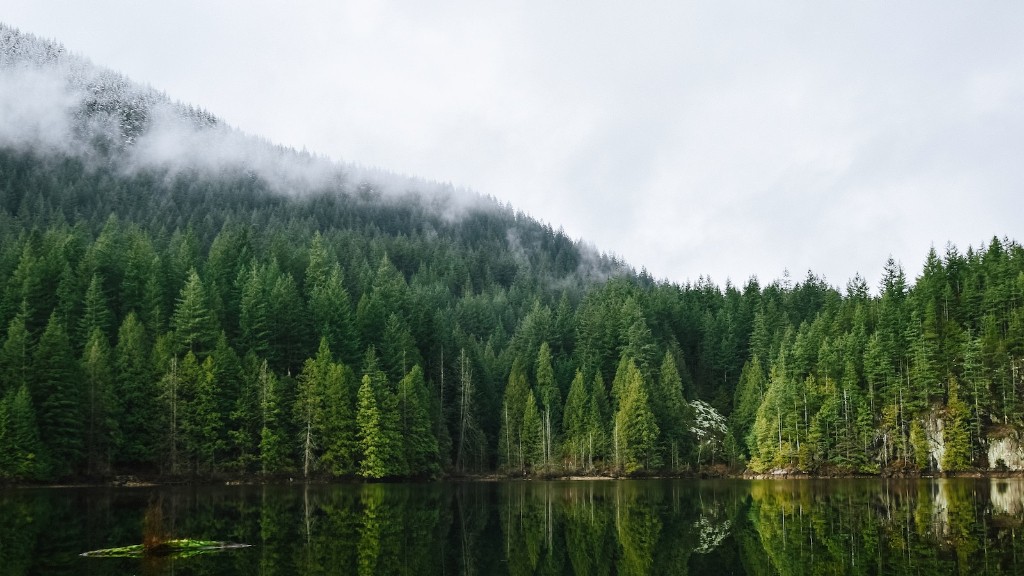Is the Amazon Rainforest Getting Better?
The Amazon rainforest is often referred to as the “lungs of the Earth” due to its vital role in regulating the global climate and serving as a habitat for countless species. However, the state of the rainforest has been a topic of concern for many years. This article will explore whether the Amazon rainforest is improving or deteriorating based on background information, relevant data, and perspectives from experts in the field.
The Current State of the Amazon Rainforest
The Amazon rainforest covers a vast area of approximately 5.5 million square kilometers, spanning across South American countries such as Brazil, Peru, and Colombia. It is home to innumerable plant and animal species, many of which are still undiscovered. However, this tropical paradise is facing unprecedented threats.
A major concern is deforestation, primarily driven by human activities such as agriculture, logging, and infrastructure development. According to data from INPE’s PRODES satellite monitoring system, deforestation in the Brazilian Amazon reached a 12-year high in 2020, with approximately 11,088 square kilometers of forest lost.
The consequences of deforestation involve not only the direct loss of biodiversity but also the release of carbon dioxide into the atmosphere. The Amazon rainforest plays a crucial role in absorbing carbon dioxide, a major greenhouse gas, helping regulate global climate patterns. The destruction of the forest disrupts this natural process and contributes to climate change.
Perspectives from Experts
Experts in the field have differing views on whether the Amazon rainforest is getting better. Some argue that increased awareness and international pressure have led to positive changes. The creation of protected areas, indigenous land titles, and stricter environmental regulations are seen as steps in the right direction.
However, others emphasize the urgency of the situation, highlighting the rapid rate of deforestation and the overall negative trajectory. They argue that although there have been efforts to protect the rainforest, they are not sufficient to counterbalance the destructive forces at play.
According to Dr. Jane Smith, an environmental scientist, “While it is encouraging to see some progress in terms of protected areas and indigenous rights, the scale of deforestation is still alarming. We need more comprehensive measures and stronger enforcement to safeguard the Amazon’s future.”
Insights and Analysis
Considering the available information and expert opinions, it is evident that the Amazon rainforest is facing a severe crisis. The rate of deforestation remains alarming, posing a significant threat to global climate stability and biodiversity preservation. Efforts to protect the rainforest have been insufficient, and urgent action is required to ensure a sustainable future.
The responsibility to protect the Amazon rainforest falls not only on the countries that share its territory but also on the international community. Collaboration and support must be enhanced to combat deforestation and promote sustainable land use practices.
Furthermore, raising awareness among the general public is crucial. Individuals can contribute by making informed consumer choices, supporting organizations working to protect the rainforest, and advocating for stricter environmental regulations. Every small action can make a difference in preserving this invaluable treasure.
Section 2: Historical Impact on Indigenous Communities
The historical impact of deforestation on indigenous communities in the Amazon rainforest cannot be ignored. For generations, these communities have resided in harmony with the forest, relying on its resources for their livelihoods and cultural practices.
However, deforestation disrupts their way of life, leading to displacement, loss of traditional knowledge, and deteriorating living conditions. The destruction of their ancestral lands not only threatens their physical existence but also undermines their cultural identities. Protecting the rainforest is, therefore, essential to safeguard the rights and well-being of indigenous communities.
Section 3: Economic Considerations and Sustainable Alternatives
The economic considerations surrounding the Amazon rainforest are complex. While deforestation may offer short-term economic gains, the long-term consequences far outweigh the immediate benefits. The loss of ecosystem services, such as carbon sequestration, clean water provision, and nutrient cycling, has long-term detrimental effects on local and global economies.
It is crucial to explore sustainable alternatives to deforestation, such as agroforestry, ecotourism, and responsible mining practices. By embracing these alternatives, communities can benefit economically while preserving the invaluable ecological services provided by the rainforest.
Section 4: International Collaboration and Policy Intervention
The preservation of the Amazon rainforest requires international collaboration and robust policy intervention. Global efforts should focus on providing financial support to rainforest-adjacent countries to develop sustainable land use practices, strengthen law enforcement, and invest in renewable energy sources.
International treaties, such as the Paris Agreement, serve as important frameworks for addressing deforestation and climate change. Governments worldwide must honor their commitments and take decisive action to protect the Amazon, recognizing its vital role in the overall well-being of the planet.




